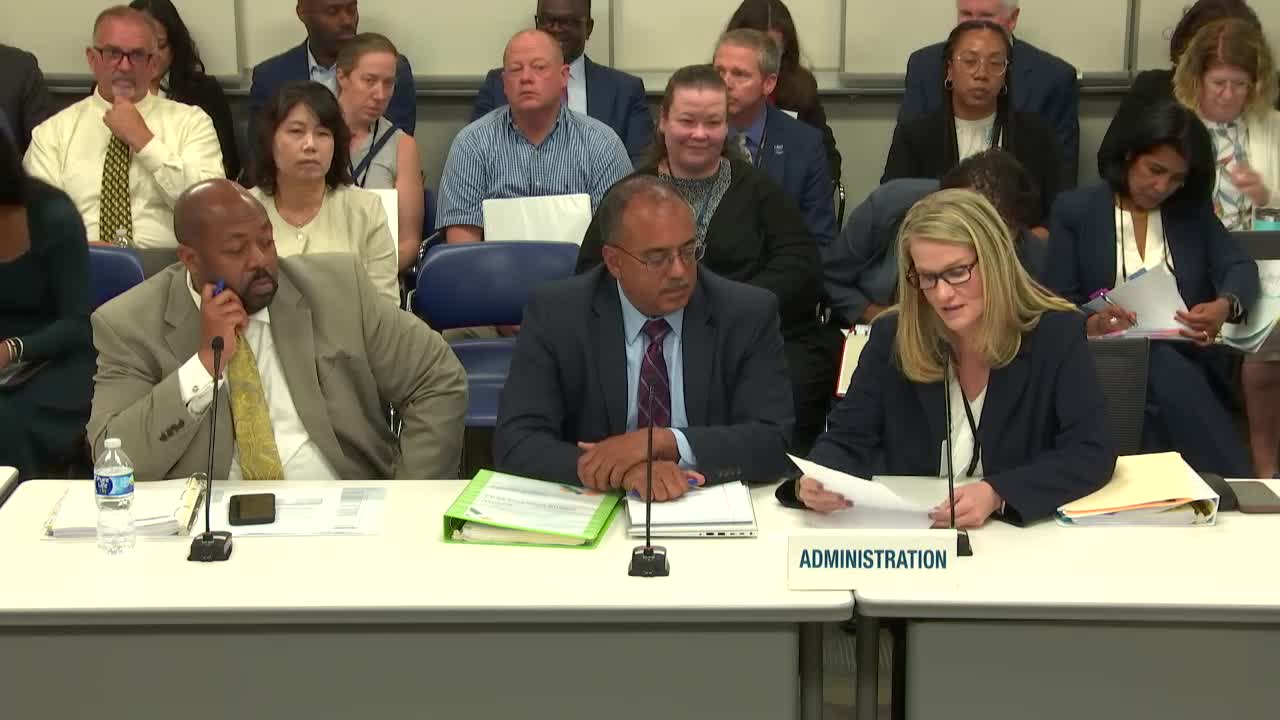County Administration outlines proposed budget including youth programs and tree planting initiative
May 14, 2025 | Howard County, Maryland
This article was created by AI summarizing key points discussed. AI makes mistakes, so for full details and context, please refer to the video of the full meeting. Please report any errors so we can fix them. Report an error »

During a recent budget work session on May 14, 2025, Howard County officials outlined significant financial proposals that aim to enhance community services and support local agriculture. The proposed budget for the general fund is set at $20 million, reflecting a 1.6% increase from the previous year. This increase is largely attributed to new workforce development initiatives and the absorption of positions due to reduced grant funding.
One of the standout initiatives discussed was the Ag Land Preservation Fund, which has a proposed budget of $1 million, marking a $392,000 increase. This funding will support local farmers through food purchases for the Roving Radish program, which distributes fresh produce to residents. Additionally, the budget includes provisions for a new program aimed at assisting beginning farmers by offering low-cost leasing options for agricultural land.
The meeting also highlighted the county's commitment to environmental sustainability, with the Office of Community Services reporting the successful planting of 46,800 native trees in collaboration with the Maryland Department of Natural Resources. This initiative not only enhances local ecosystems but also demonstrates the county's dedication to green initiatives.
In response to concerns about food security, particularly in schools, officials confirmed ongoing partnerships with the Howard County Public School System to provide students with access to mobile markets and fresh produce. This collaboration aims to mitigate the impact of funding cuts to school meal programs and support local farmers.
The budget discussions also touched on the plastic bag fee, which is projected to decrease, raising questions about its impact on grant funding for environmental projects. Officials acknowledged the need for careful management of grant proposals as the fund continues to decline, emphasizing the importance of supporting community organizations focused on waste reduction and environmental conservation.
As Howard County moves forward with these budget proposals, the focus remains on enhancing community services, supporting local agriculture, and addressing environmental concerns, all of which are crucial for the well-being of residents. The next steps will involve finalizing the budget and ensuring that these initiatives effectively meet the needs of the community.
One of the standout initiatives discussed was the Ag Land Preservation Fund, which has a proposed budget of $1 million, marking a $392,000 increase. This funding will support local farmers through food purchases for the Roving Radish program, which distributes fresh produce to residents. Additionally, the budget includes provisions for a new program aimed at assisting beginning farmers by offering low-cost leasing options for agricultural land.
The meeting also highlighted the county's commitment to environmental sustainability, with the Office of Community Services reporting the successful planting of 46,800 native trees in collaboration with the Maryland Department of Natural Resources. This initiative not only enhances local ecosystems but also demonstrates the county's dedication to green initiatives.
In response to concerns about food security, particularly in schools, officials confirmed ongoing partnerships with the Howard County Public School System to provide students with access to mobile markets and fresh produce. This collaboration aims to mitigate the impact of funding cuts to school meal programs and support local farmers.
The budget discussions also touched on the plastic bag fee, which is projected to decrease, raising questions about its impact on grant funding for environmental projects. Officials acknowledged the need for careful management of grant proposals as the fund continues to decline, emphasizing the importance of supporting community organizations focused on waste reduction and environmental conservation.
As Howard County moves forward with these budget proposals, the focus remains on enhancing community services, supporting local agriculture, and addressing environmental concerns, all of which are crucial for the well-being of residents. The next steps will involve finalizing the budget and ensuring that these initiatives effectively meet the needs of the community.
View full meeting
This article is based on a recent meeting—watch the full video and explore the complete transcript for deeper insights into the discussion.
View full meeting
